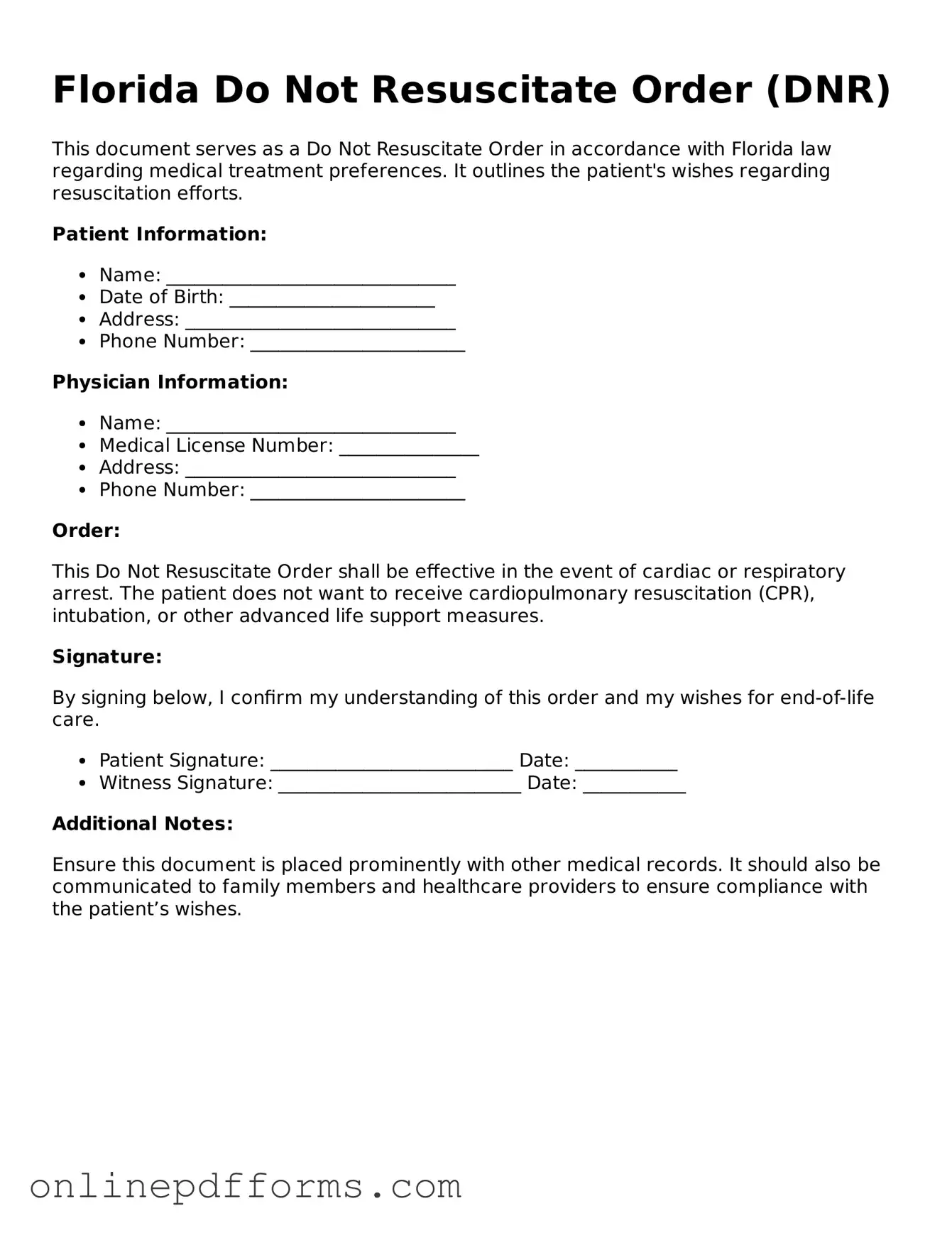The Florida Do Not Resuscitate Order (DNRO) form shares similarities with the Physician Orders for Life-Sustaining Treatment (POLST) form. Both documents are designed to communicate a patient’s preferences regarding medical treatment in emergency situations. The POLST form is often used for patients with serious illnesses or those nearing the end of life, ensuring that their wishes are honored by healthcare providers. Like the DNRO, the POLST form is a medical order that must be signed by a physician, making it legally binding and ensuring that medical personnel are aware of the patient’s desires regarding resuscitation and other life-sustaining treatments.
The essential New York Rental Application form is a critical resource for landlords to assess potential tenants efficiently. This form covers vital information needed to make informed decisions during the rental process, helping ensure a fair and organized approach to tenant selection.
Another document comparable to the DNRO is the Advance Directive. This legal document allows individuals to outline their preferences for medical care in the event they become unable to communicate their wishes. While the DNRO specifically addresses resuscitation, an Advance Directive can cover a broader range of medical decisions, including the use of ventilators or feeding tubes. Both documents aim to ensure that a patient’s wishes are respected, but the Advance Directive provides a more comprehensive overview of a person's healthcare preferences.
The Medical Power of Attorney (MPOA) is also similar to the DNRO in that it allows individuals to designate someone to make medical decisions on their behalf. This document is particularly useful when a person is incapacitated and unable to express their treatment preferences. While the DNRO specifically addresses resuscitation efforts, the MPOA empowers the designated agent to make various healthcare decisions, including those related to life-sustaining treatments. Both documents emphasize the importance of patient autonomy and informed decision-making in healthcare.
The Living Will is another document that parallels the DNRO. A Living Will is a type of Advance Directive that specifically outlines a person's wishes regarding end-of-life care. Like the DNRO, it provides guidance to healthcare providers about the individual's preferences in situations where they cannot communicate. While the DNRO focuses solely on resuscitation, the Living Will encompasses a broader scope of treatment decisions, such as the use of artificial nutrition and hydration.
The Do Not Intubate (DNI) order is similar to the DNRO in that it specifically addresses a patient’s wishes regarding a particular medical intervention. A DNI order indicates that a patient does not want to be placed on a ventilator if they stop breathing or their heart stops. Both documents serve to guide medical professionals in respecting the patient’s preferences during critical situations, ensuring that unwanted interventions are avoided.
The Comfort Care Order is another document that aligns with the principles of the DNRO. This order emphasizes the provision of comfort measures rather than aggressive medical interventions. It aims to prioritize the patient’s comfort and quality of life, particularly in end-of-life scenarios. While the DNRO focuses on resuscitation efforts, the Comfort Care Order provides a broader approach to care, ensuring that patients receive supportive measures without unnecessary medical procedures.
The No Code order is akin to the DNRO, as it explicitly states that a patient does not wish to receive resuscitation in the event of cardiac arrest. This order is often used interchangeably with the DNRO in clinical settings. Both documents communicate the patient’s intent clearly, allowing healthcare providers to respect their wishes during emergencies.
The Hospice Care Plan also bears similarities to the DNRO. In hospice care, the focus is on providing comfort and support to individuals with terminal illnesses. The care plan outlines the patient’s preferences for treatment, including their wishes regarding resuscitation. While the DNRO is a specific order regarding resuscitation, the Hospice Care Plan encompasses a holistic approach to care, ensuring that the patient’s overall needs and preferences are addressed.
The Patient Self-Determination Act (PSDA) is relevant to the discussion of the DNRO as it emphasizes the importance of patient autonomy in healthcare decisions. This federal law requires healthcare providers to inform patients of their rights to make decisions about their medical care, including the right to create documents like the DNRO. Both the PSDA and the DNRO promote informed consent and empower individuals to take an active role in their healthcare choices.
Finally, the Emergency Medical Services (EMS) Do Not Resuscitate (DNR) form is similar to the Florida DNRO. This form is specifically designed for use by emergency medical services personnel, ensuring that first responders are aware of a patient’s wishes regarding resuscitation. Like the DNRO, the EMS DNR form must be completed and signed to be valid, allowing for clear communication of the patient’s preferences in emergency situations.
